
As the cooler weather arrives, this is a great time to think about ordering bare root fruit canes and fruit bushes for your garden.
If you make the right choices, you could be enjoying a bountiful harvest next year, right through the summer and into next fall.
But how should you go about choosing which fruit canes and fruit bushes to buy?
In this article, we’ll consider a range of factors, and discuss some options, to help you come to your decisions.
10 Considerations Before Choosing A Fruit Cane Or Bush
1. Choosing Based On Your Location
Of course, one of the very first things to consider when making any plant choice is your location. It is important to think about:
- The general climate and weather conditions where you live.
- The micro-climate of your particular site (taking patterns of sunlight and shade, water and wind flow into account).
- The type of soil where you live, and its characteristics. (For example, is it a heavy clay, a loam, silty or sandy. Is it deep or shallow? How fertile is it? Is it moisture retentive or free draining?)
- The pH of the soil. (Is it alkaline, neutral or acid?)
The above factors will, of course, impact on which plants you will be able to grow successfully where you live. If you need to amend or improve your soil, it is a good idea to do so before you order any fruit canes and fruit bushes.
Make sure that you do not take into account only the types of fruit that you will be able to grow. It is also important to understand that each type of fruit will also have different varieties that will grow well, or less well, where you live.
When choosing fruit canes and fruit bushes for your garden, it is best to choose options grown as close as possible to where you live. These plants are more likely to be bred to suit the conditions in your area.
2. Choosing Based On Your Tastes
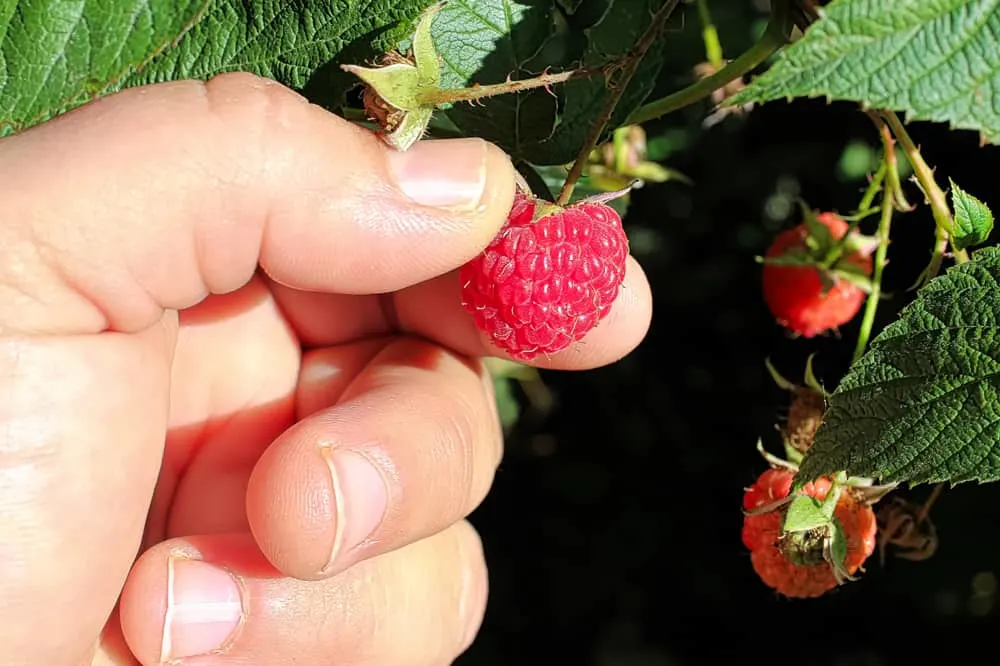
Another important consideration when it comes to choosing plants for your edible garden is personal preference.
Surprisingly frequently, gardeners forget one simple fact. They forget that while choosing the right plants for the right places is key, it is also important to think about which fruits you and your family actually like to eat!
Don’t get carried away and plant a range of fruit canes and fruit bushes that will produce a harvest that will be a chore to harvest and prepare or preserve. It would be a shame to plant a range of options only for the fruits to go to waste.
In our household, we particularly love raspberries.
This means that we have more raspberries here than one might expect for the size of our site. In addition to allowing wild raspberries to encroach on the corners of the garden, we also cultivate red, black and golden raspberries around the forest garden. What we don’t manage to get to in time, the chickens gobble up greedily.
We also have several gooseberry bushes.
Though not everyone is as enamoured of these tart fruits, nor picking from the prickly bushes, we cultivate quite a few.
As well as using some of them in jams, puddings etc., we also blend slightly under-ripe gooseberries to make an alternative to lemon juice to add tartness and fruity tang to a range of recipes.
(Lemons are challenging to grow here, but we find gooseberry juice works well as an alternative in a range of sweet and savory recipes.)
When thinking about preferences, do not just think about taste. Think, too, about how easy the plants will be to harvest. Determine whether you will have the time and inclination to harvest them at the time of year when they are ready for picking.
3. Considering Year-Round Growing & Eating
It is also important, when choosing your fruit canes and fruit bushes, to consider how the harvest time will fit in with other jobs around your property, and whether an intensive harvest period will coincide with another busy harvesting time for other crops.
Year-round growing and eating is all about timings. Identifying any gaps in a harvesting schedule and finding plants that fill them can be a good idea – especially if you are aiming for self-sufficiency.
While we grow and harvest crops all year round, we know that our busiest time when it comes to harvesting is fall – when first the plums and then the numerous apples are ready to pick. For this reason, we avoid growing too many soft fruits that will require picking at the same time.
Thinking about the harvest times of the fruits and varieties that you are considering can also help you to prolong the season over which you can enjoy a particular fruit.
Our chosen raspberries are a great example. The wild raspberries are usually ready for picking before the cultivated varieties – in around July.
(We’ve even managed to extend the season by a couple of weeks by allowing wild raspberries to pop up in a corner of the polytunnel. These ripen quite a lot earlier than the wild raspberries just outside.)
After this, we have a range of summer fruiting raspberries. Once these are reaching the tail end of their harvest, we have a few early fall raspberry varieties to enjoy, which are usually out of the way before the blackberry harvest begins in earnest.
By choosing the right fruits and varieties, you can enhance your year round growing and eating schedule, and help make sure you have the time to harvest the fruits of your labors.
4. Considering Overall Garden Design
When choosing fruit canes and fruit bushes for your garden, it is always important to think of them not only in isolation.
Consider how your new plants will fit in to your overall garden design. Think about how they will fit in with other plants. These are other factors that can help to inform your choices.
5. Guilds & Companion Planting
Building biodiversity as much as possible is key in an organic garden.
The more beneficial interactions between plants and other elements of the ecosystem you can create, the more stable and resilient the system will be.
It is important not to create mono-cultures – large areas of only one type of plant. Even though, as mentioned above, we grow rather a lot of raspberries on our property, these are not all together.
Instead, they are included as part of polycultures in various parts of the garden and orchard. They are in among and surrounded by a range of different plants.
Some are parts of guilds around fruit trees in the forest garden, others are companion planted with herbs and flowers that attract beneficial wildlife which aids in successful fruit production.
When choosing fruit trees for your garden, it is important to consider which plants will surround them, rather than just thinking about the fruit canes and fruit bushes in isolation. You may like to source/ order other perennial companion plants at the same time.
6. Windbreaks & Fruit Hedging
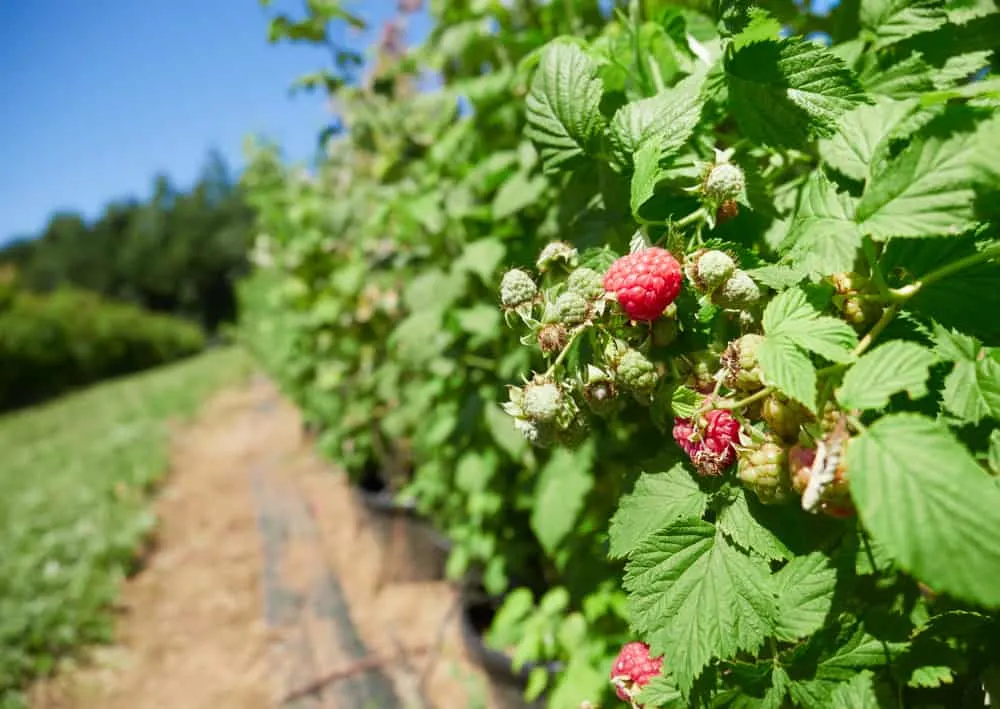
Fruit canes and fruit bushes can also be incorporated into an overall garden design as windbreaks or hedging.
A windbreak of fruit canes, for example, could provide some partial shelter for annual vegetable beds. Fruit bushes could be used to line a driveway, or mark a garden boundary.
Placing fruiting plants along the side of a pathway could allow for easy picking, and allow you to make the most of a marginal space that might not otherwise be used.
Considering how and where your fruit canes and fruit bushes will be positioned with reference to your overall garden design can help you to decide which types and varieties to go for.
7. Small-Space Gardening
Of course, fruit canes and fruit bushes can also be incorporated into even the smallest of gardens.
Keep in mind, when choosing types and varieties, whether your plants will be grown in the ground, or in containers. A number of different fruits can be grown in containers, and container gardening could be a good choice where space is particularly limited.
Another important thing to think about, when choosing which fruits to grow, is how the fruits you are considering might be supported in order to maximise yield in a given space.
8. Supports & Structures
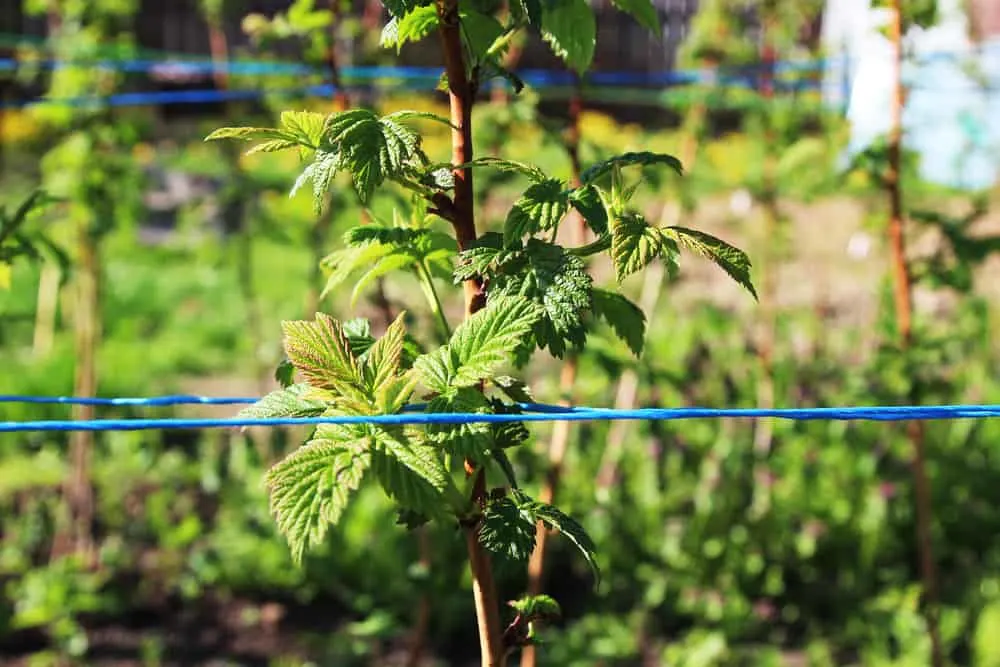
When choosing fruit canes and bushes, it is essential to think about any supports and structures that might be used with the plants you are considering. The space available and the structures and supports that you plan to use could dictate which options will be best.
For example, if you have a thin, narrow space, you might prefer to opt for fruiting canes, which can be tied into a double line support structure, rather than bushes which will tend to be wider and more sprawling in form.
To make a sturdy support, use firm wooden posts and metal wire. Against a wall or fence, you may be able to consider training a fruit bush as a cordon or fan.
Currants are one option that might be suitable for this treatment. A circular growing area (or container) could hold a single specimen bush, perhaps, or a wigwam structure supporting a few canes.
Another thing to consider is how vulnerable the plants you choose will be to pests in your garden. In addition to thinking about companion plants, you may also like to consider sourcing (or making) a fruit cage, or growing fruits under cover in a polytunnel to protect the fruits from birds and other wildlife that may eat your harvest before you can.
You can make your own fruit cages using reclaimed wood and galvanized metal mesh. If you will be growing fruits under cover, this is another factor that will determine which types and varieties you should go for.
It is a good idea to think about supports and other structures before you choose and order your fruit canes and fruit bushes.
9. Bare-Root or Pot-Grown?
Fruit canes and fruit bushes are usually bought as either bare-root or pot-grown.
As the names suggest, bare root plants are delivered with their roots bare, which pot-grown plants are delivered in containers.
Bare root canes and bushes can be sourced and delivered all year round, while bare root options are delivered during the dormant period, from fall through early spring.
Bare root plants are cheaper than pot grown ones, which is one of the main advantages. Another advantage is that you can carry and plant them more easily. They will also require less maintenance after planting.
Environmentally, they can also be a better choice, since less fuel and packaging will be involved in their delivery.
However, pot grown specimens do also sometimes have certain advantages. They can be delivered and planted at any time of year, and can be kept for longer before you plant them out and will be more tolerant of any delays.
Generally speaking, however, when choosing fruit canes and fruit bushes during the fall and winter, I would recommend that you go for bare-root options.
10. Heritage or Hybrid Fruit Varieties?
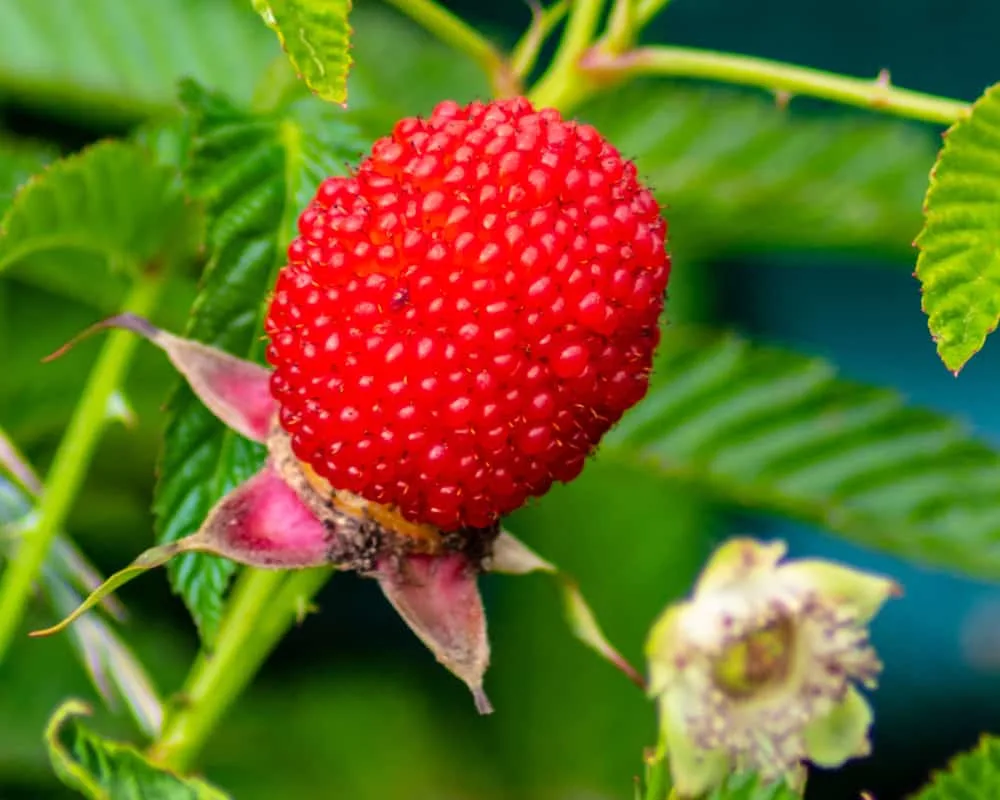
Another thing to remember is that there are heritage and hybrid varieties. Both options can have their benefits, but it is important to understand what the differences are.
Heritage varieties are ‘the classics’, if you will.
Modern commercial fruit production usually focuses on just a small number of fruit varieties.
By choosing more unusual heritage classics to grow, you can help to maintain crop diversity by keeping rarer varieties alive. Heritage fruits are often superior in their taste, and can offer more variety for your fruit production.
Hybrid varieties have been specifically bred to have certain beneficial characteristics.
The fruits may store better, or be easier to pick. The plants may be, in certain cases, more resistant to pests and disease. They may have improved yields, or increased vigour or hardiness.
5 Fruit Canes To Consider Growing
By now, you should have a much better idea of what you are looking for when choosing soft fruits for your garden.
So let’s take a look at some of the options that you could consider.
First, here are fruit canes that can work well in many gardens:
1. Raspberries (red, black & golden)
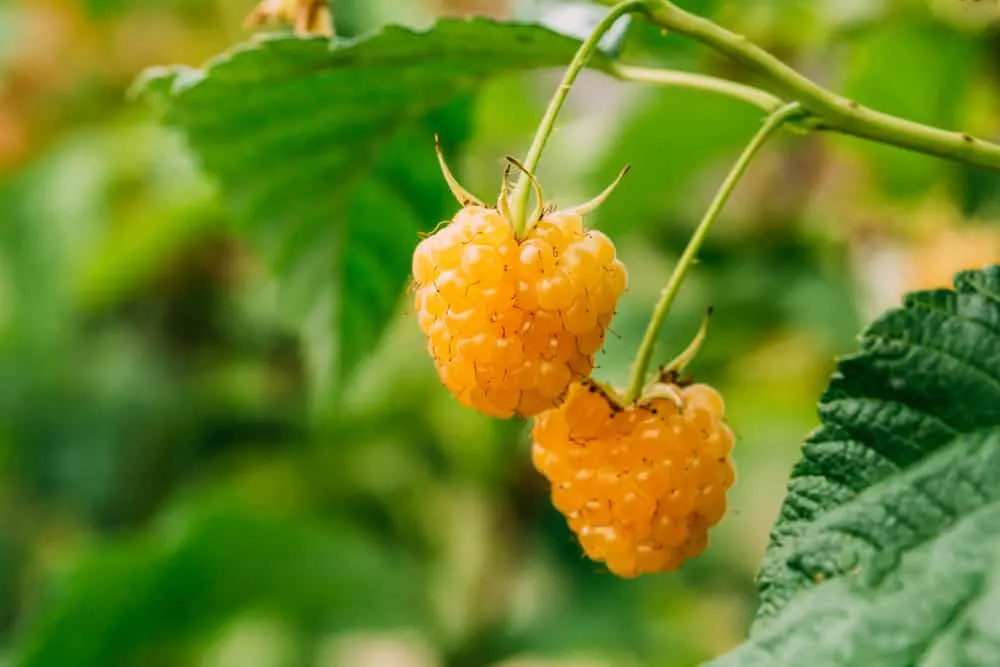
Raspberries are a classic choice, and there are plenty of options to choose from.
In addition to the red kind, you can also find black raspberry and golden raspberry varieties. When choosing your raspberries, you will need to decide whether you would like summer-fruiting or autumn-fruiting varieties.
Some raspberries are primocane (fruiting on this year’s growth) while others fruit on the growth of the previous year.
When picked, raspberries come free of the central rasp, or plug to which they are attached.
Here’s our total guide to starting new raspberry canes.
2. Blackberries
Blackberries are, of course, a common hedgerow fruit. They are not particularly fussy about the soil in which they grow and can thrive in many different conditions.
In s smaller garden, they can be problematic due to their extremely vigorous growth. However, less vigorous and even thornless varieties are available.
3. Tayberries
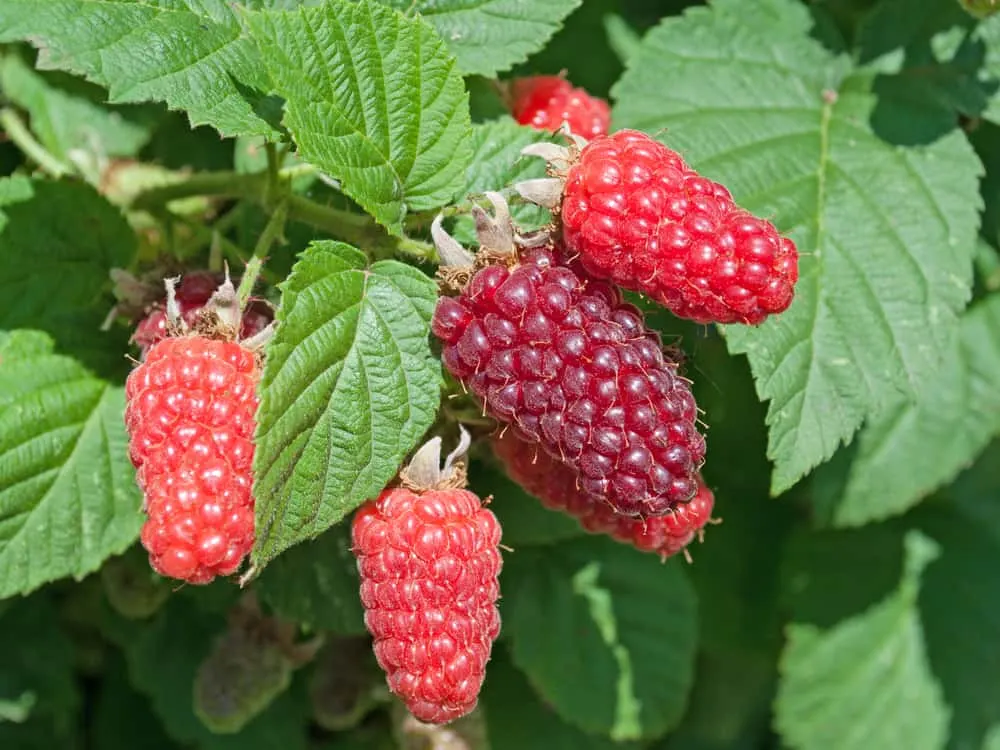
Tayberries (Rubus fructosis x ideaus) are a hybrid cross between the red raspberry and the blackberry.
Named after the river Tay in Scotland, this hybrid produces an abundant harvest of delicious fruits from late July through August.
As with raspberries, there are both primocane varieties, and floricane varieties that fruit on the previous year’s canes.
Like raspberries, Tayberries pull off the plants retaining the rasp, or plug, inside.
4. Boysenberries
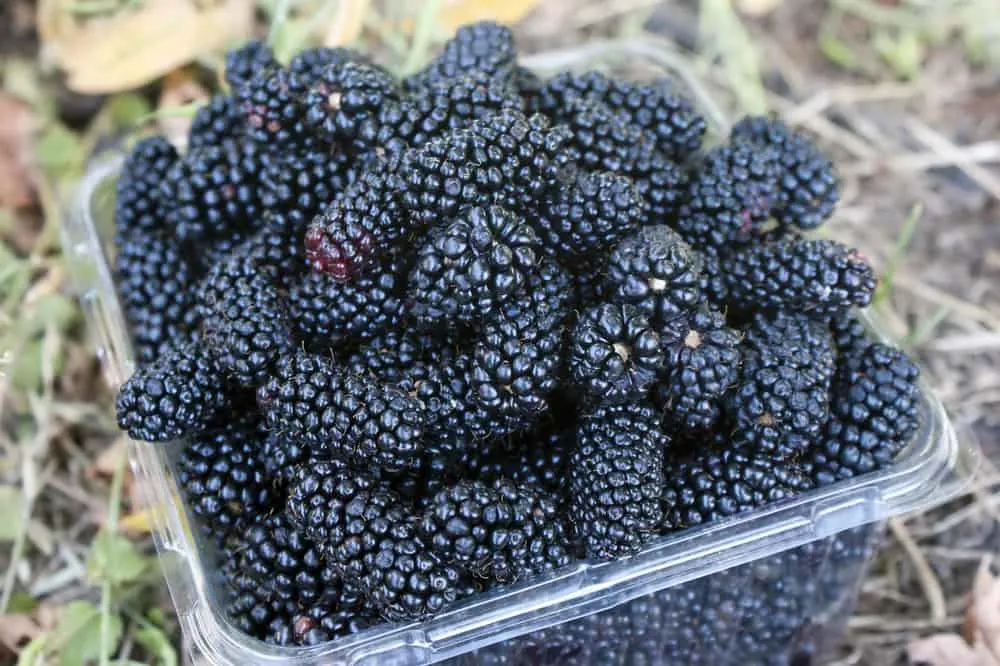
Boysenberries are a cross involving the raspberry, blackberry, dewberry and loganberry. They are one of a number of hybrids, which also include the ‘Newberry’.
As with blackberries, it is possible to source a number of thornless varieties.
Growing on low, trailing plants, these berries are known for their soft texture, this skins and sweet-tart flavor.
5. Wineberries
Wineberries, also sometimes known as dewberries, are an Asian species of raspberry, Rubus phoenicolasius.
This species is native to Eastern Asia and has been introduced to parts of Europe and North America.
(Note, in certain regions this is invasive, and categorized as a noxious weed.)
15 Fruit Bushes To Consider Growing
There is an even wider range of fruit bushes to choose from. Here are fifteen options which you might like to consider for your garden:
1. Mulberries
2. Blackthorn/ Sloes
3. Currants (Blackcurrants, redcurrants, white currants or golden currants.)
4. Gooseberries (Green or red varieties.)
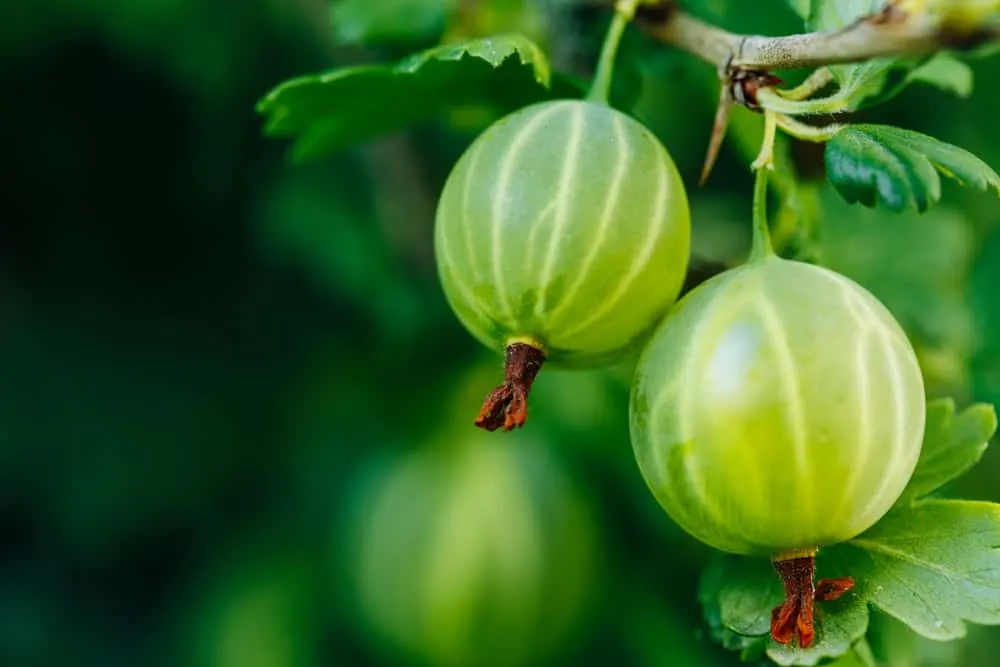
5. Jostaberries (A cross between blackcurrants and gooseberries.)
6. Chuckleberries (A cross between redcurrant and jostaberry.)
7. Blueberries
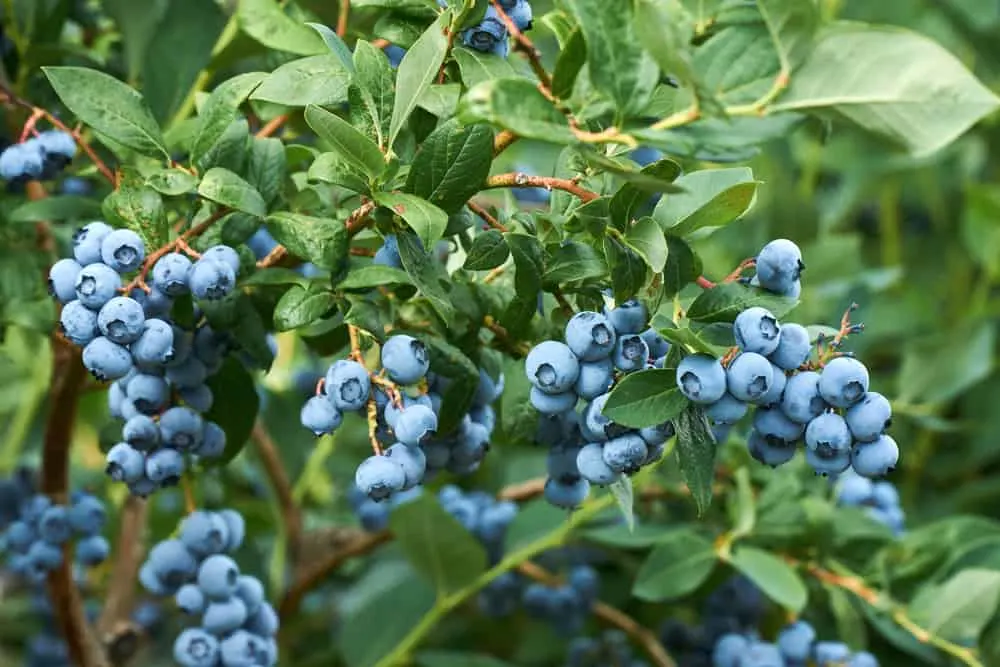
8. Cranberries
9. Chokeberries (Aronia melanocarpa)
10. Honeyberries (Lonicera caerulea)
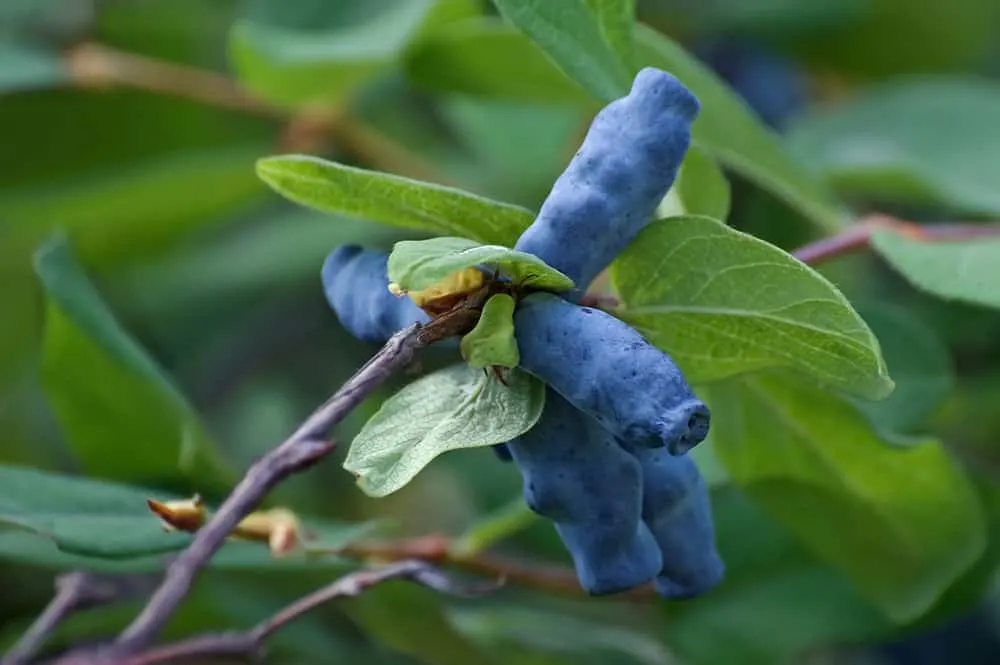
11. Goumi (Elaeagnus multiflora)
12. Autumn Olive (Elaeagnus umbellata)
13. Sea Buckthorn (Hippophae rhamnoides)
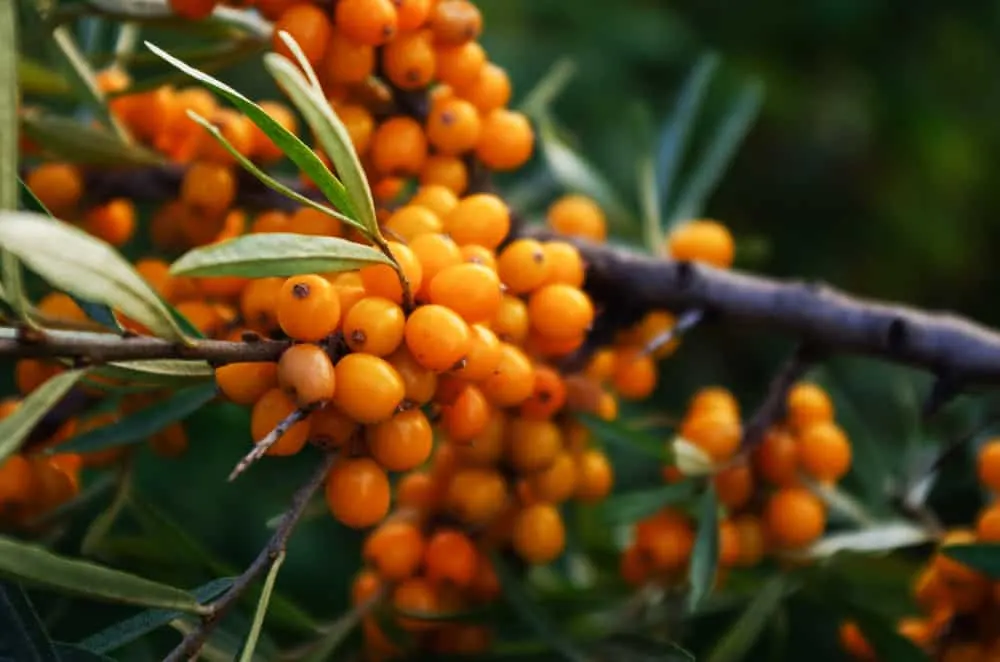
14. Saskatoon Berries (Amelanchier alnifolia)
15. Gaultheria Shallon
Of course, there are also plenty of other berry and fruit bearing bushes or shrubs that you could consider for your garden.
So this fall, enrich your garden with some fruit canes and fruit bushes.

Get the famous Rural Sprout newsletter delivered to your inbox.
Including Sunday ramblings from our editor, Tracey, as well as “What’s Up Wednesday” our roundup of what’s in season and new article updates and alerts.

